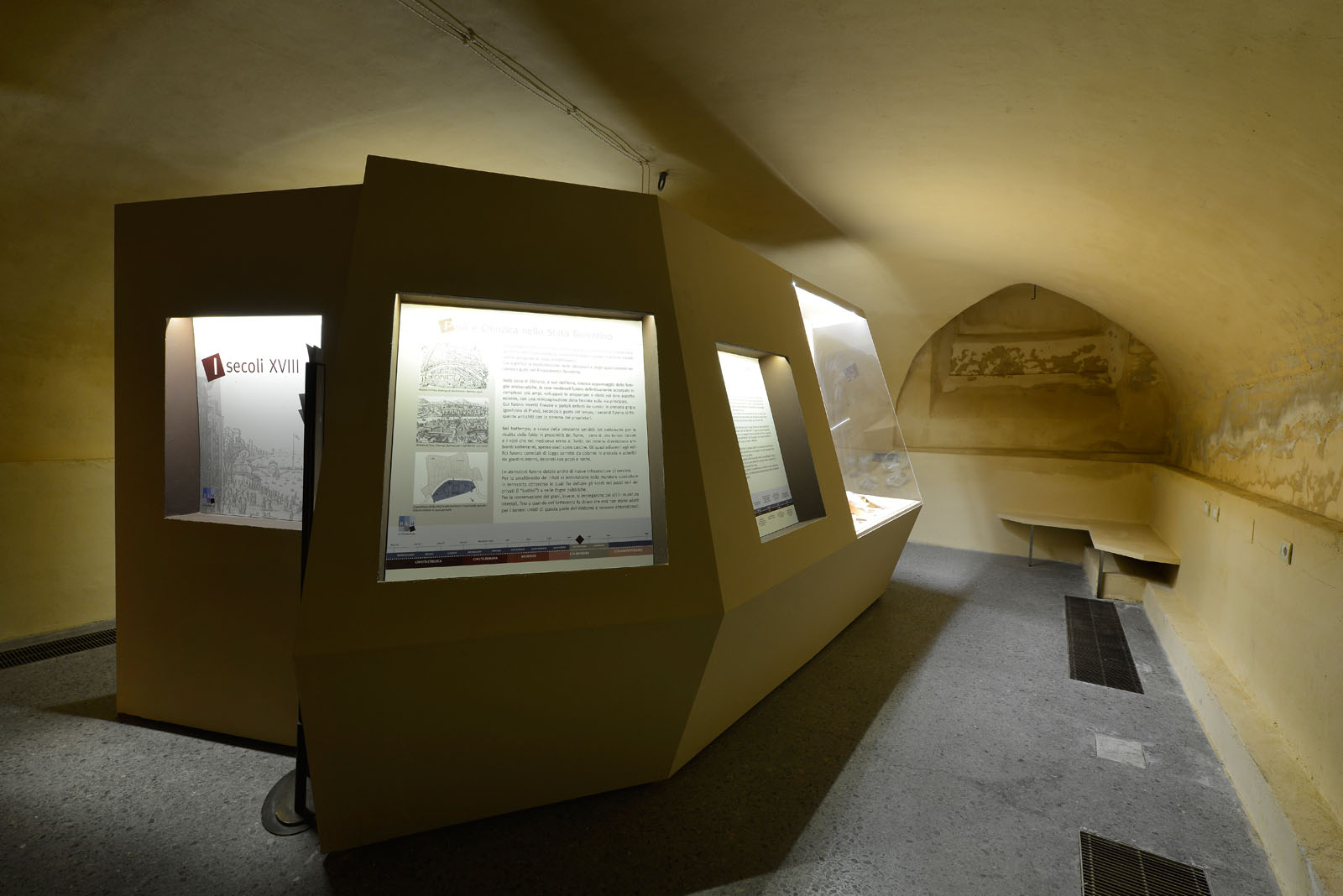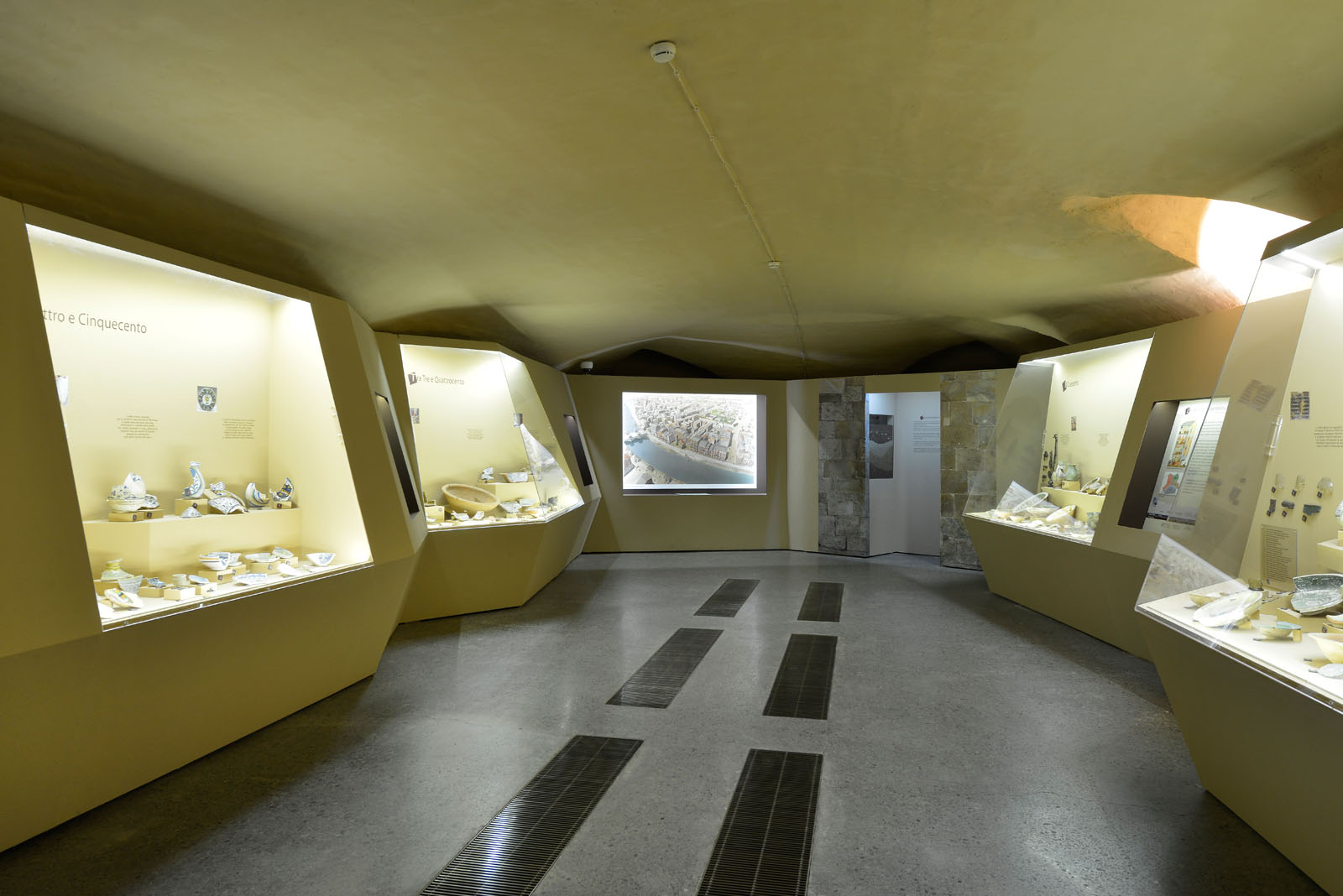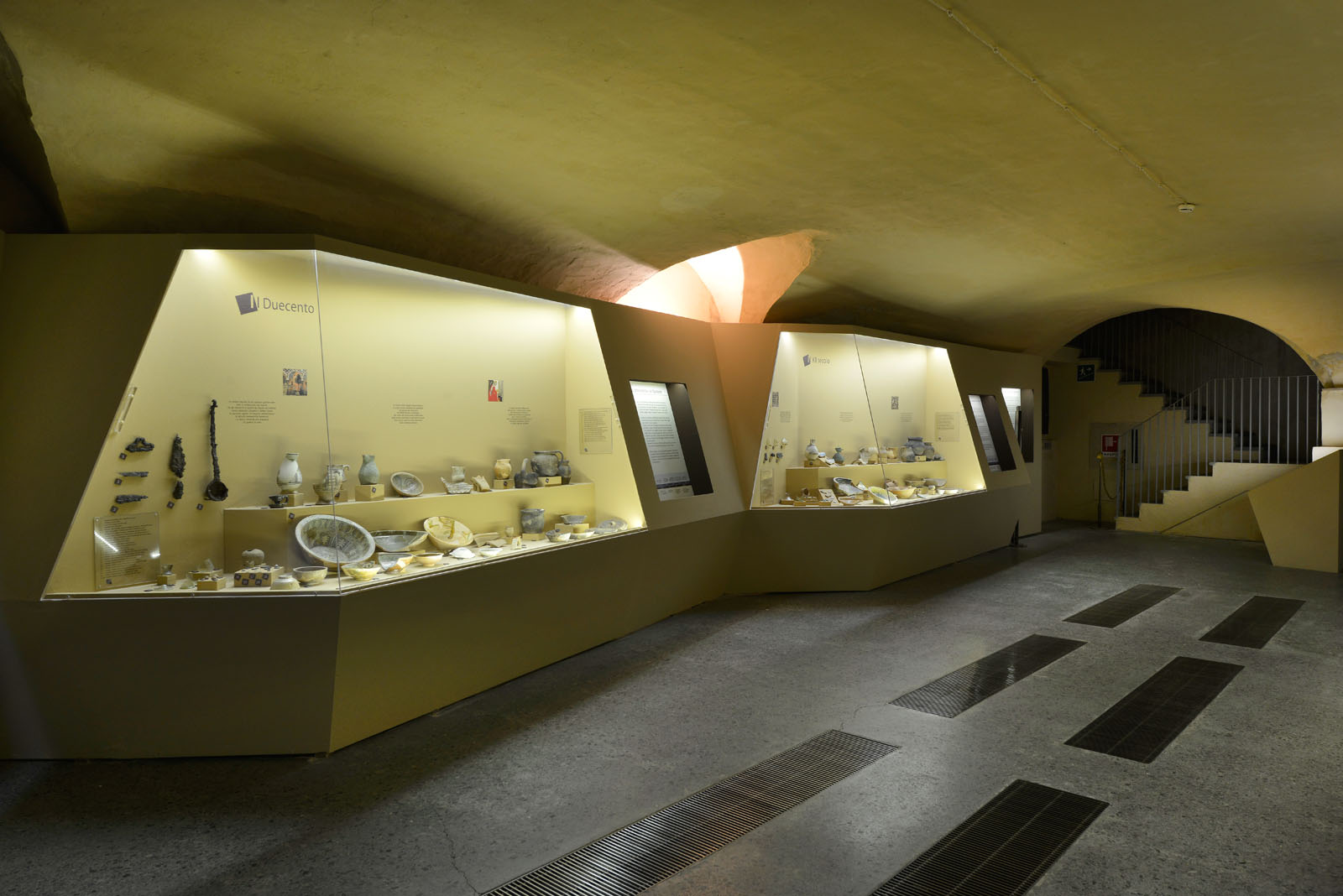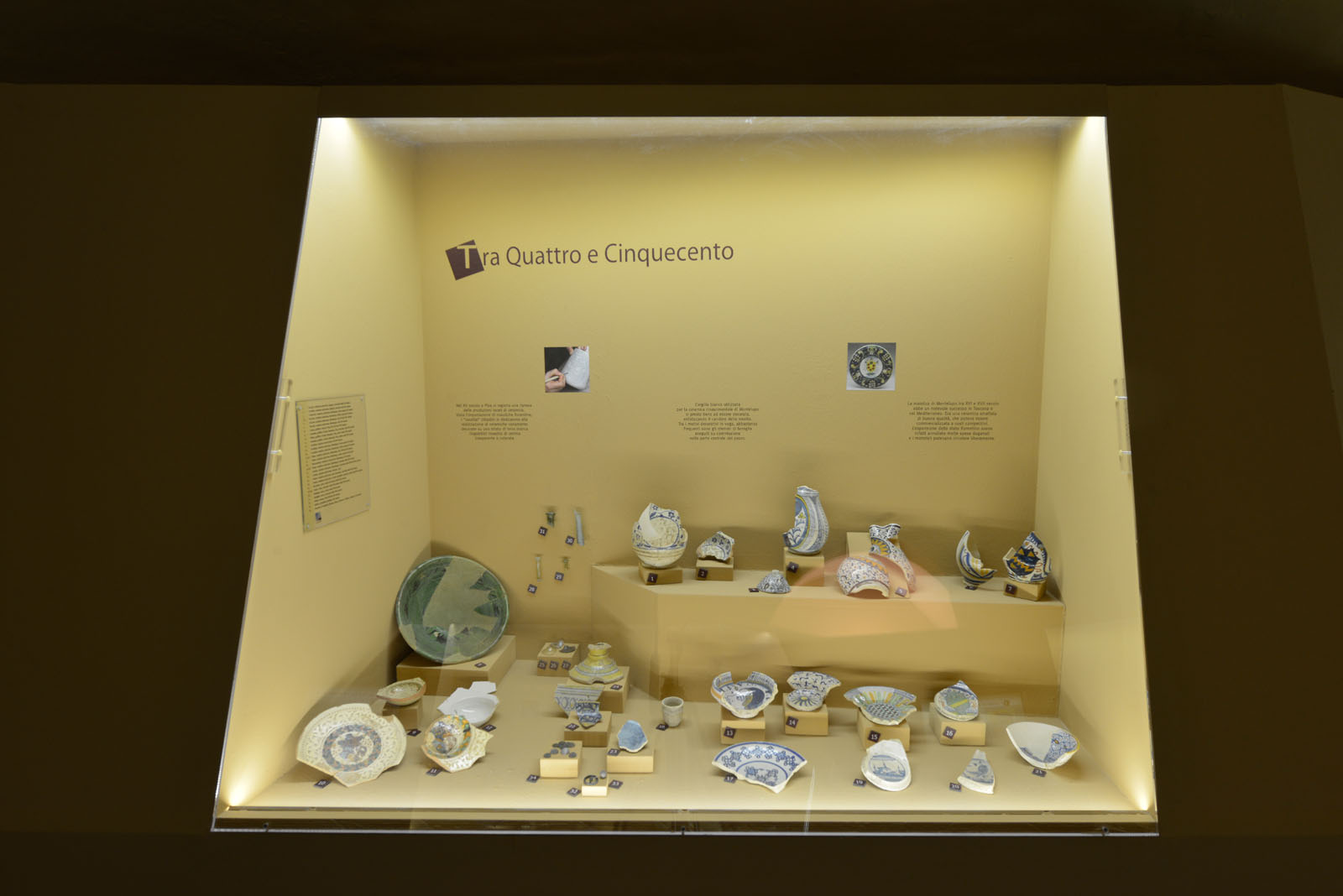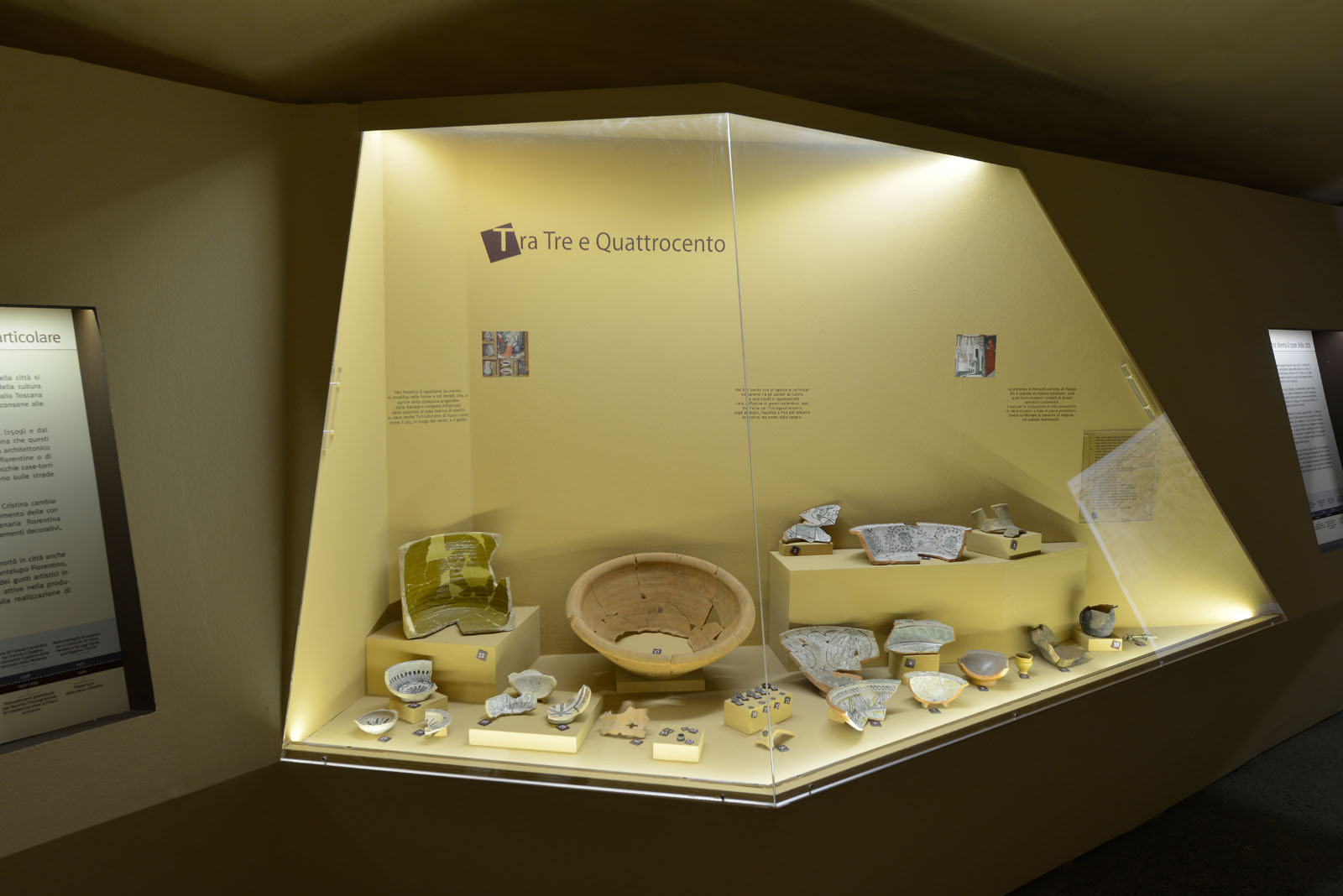Le Fondamenta
To the roots of Palazzo Blu and Pisa through archeology
In the three rooms located in the basement of Palazzo Blu there is a permanent archaeological exhibition that illustrates the history of this architectural complex and its settlement context starting from the year 1000, when the early medieval city grew on the left bank of the river, in the area called "Oltrarno", and the "Chinzica" neighborhood developed.
This is where the residences of the most influential families of Pisa in the 13th and 14th centuries arose, when the maritime Republic was at the height of its economic and commercial power. And it is still in these places, transformed into large buildings, where many Pisan and then Florentine noble families resided, when the city and its territory were definitively included in the Medici state (1509). The finds, exhibited in showcases organized for coherent contexts, illustrate the ways of living and daily life, from eating habits to productive activities and hobbies of those who have lived in the building and its immediate surroundings since the 7th century AD up to the thresholds of the Unification of Italy. It is therefore possible to follow the history of Palazzo Blu and a part of the city through the reconstruction of a series of successive 'frescoes', consisting of material and iconographic sources.


